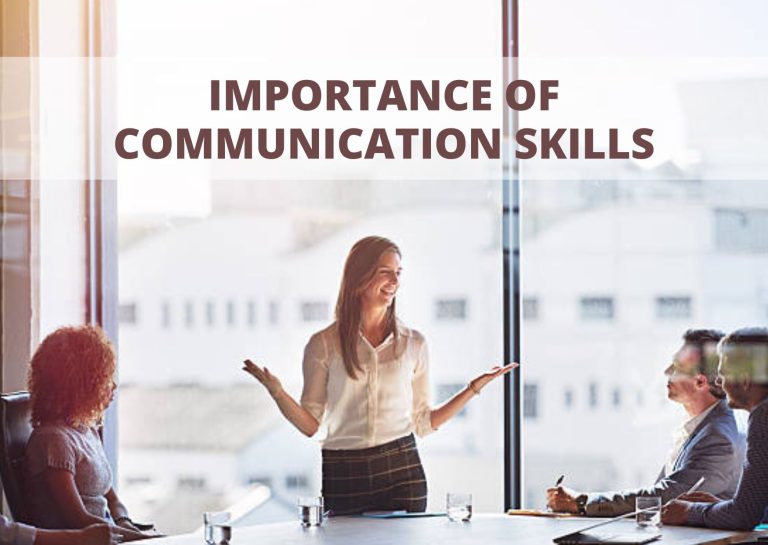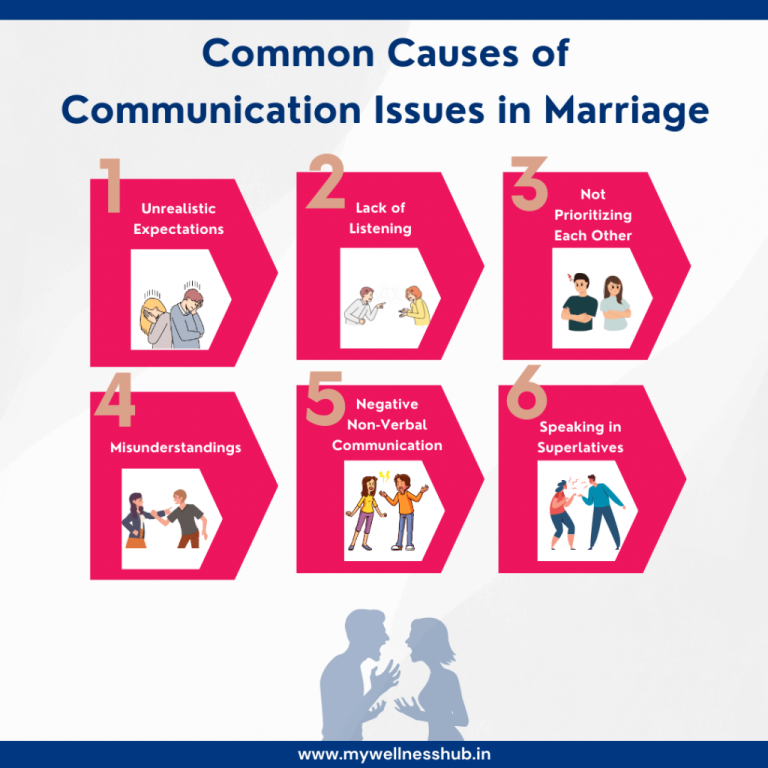Types Of Destructive Communication: Avoiding Toxic Talk
Communication shapes our relationships and environments. It can build up or tear down.
Destructive communication often harms more than it helps. It can create misunderstandings, conflict, and stress. Recognizing these negative patterns is crucial. Understanding them helps improve interactions and relationships. We interact with others every day. Words and tone can impact these interactions.
Destructive communication isn’t just about shouting or insults. It includes subtle behaviors and patterns. Ignoring someone’s opinion or constantly interrupting are examples. Such patterns can damage trust and connection. By learning about them, we can change the way we communicate. This leads to more positive and healthy relationships. Understanding these types can empower us to choose better ways to express ourselves. Let’s explore these destructive types and learn how to avoid them.

Credit: fancycomma.com
Defining Destructive Communication
Destructive communication harms relationships and disrupts understanding. It includes aggressive language, constant criticism, and sarcasm. This behavior often leads to conflicts and misunderstandings.
Defining Destructive Communication Destructive communication can silently wreak havoc in our lives, affecting relationships and mental well-being. It’s not just about shouting or using harsh words. It’s about the subtle, often unnoticed ways we undermine understanding and connection. Have you ever felt drained after a conversation, wondering what went wrong? That might be a sign of destructive communication at play. Understanding its various forms can help you identify and eliminate them from your interactions.What Constitutes Toxic Talk
Toxic talk is more than just name-calling or insults. It includes any communication that belittles, criticizes, or manipulates others. Think of conversations where sarcasm is used to mask anger or when someone uses guilt to control your actions. This type of communication can leave you feeling confused and insecure. Recognizing these patterns can empower you to stand up and steer conversations towards positivity.Common Traits Of Harmful Dialogue
Harmful dialogue often has predictable characteristics. It may involve constant interruptions, where one person dominates the conversation, leaving little room for your input. It can also include passive-aggressive remarks that aim to hurt without direct confrontation. Have you noticed how some people leave you feeling unsure or anxious after they speak? That’s not just a bad mood—that’s the impact of harmful dialogue. Identifying these traits can help you protect yourself and foster healthier communication patterns. Pause for a moment and reflect on your recent conversations. Are there instances where you felt unheard or undervalued? Recognizing these signs is the first step in transforming your communication style. You deserve interactions that build up rather than tear down.
Credit: slideplayer.com
Impact On Relationships
Destructive communication can deeply affect relationships. These negative interactions create barriers. They hurt the bonds people share. Over time, they can lead to misunderstandings. They often result in emotional distance. This type of communication can damage trust. It can erode respect between individuals. Let’s explore how it impacts personal connections and trust.
Strain On Personal Connections
Destructive communication puts a heavy strain on personal connections. Arguments become frequent. Misunderstandings grow. People feel unheard and invalidated. Personal connections weaken under such stress. The joy of interaction disappears. Conversations become battles. This strain can lead to isolation. People might choose silence over conflict.
Erosion Of Trust And Respect
Trust is fragile. Destructive communication erodes it quickly. Words can hurt more than actions. Once trust breaks, it is hard to rebuild. Respect follows a similar path. It diminishes with negative interactions. People feel undervalued. They may lose faith in the relationship. Without trust and respect, relationships struggle to survive.
Recognizing Toxic Patterns
Recognizing toxic communication patterns is crucial in maintaining healthy relationships, whether at work or in your personal life. Destructive communication can slowly erode trust and happiness without you even realizing it. Imagine feeling unheard or constantly criticized—it’s draining, right? Identifying these patterns early can save you from unnecessary stress and emotional turmoil. So, how do you spot these toxic tendencies?
Signs Of Destructive Communication
Destructive communication often comes disguised in familiar forms. Are you noticing frequent sarcasm or passive-aggressive comments in your conversations? These might seem harmless initially but can hurt deeply over time. If you feel you’re walking on eggshells around someone, that’s a red flag. Consistent interruptions when you speak can also signal disrespect and undermine your confidence. Are you feeling belittled or dismissed? Such signs should never be ignored.
Behaviors To Watch For
Pay attention to behaviors that trigger negative feelings. Stonewalling, or completely shutting down a conversation, is a common toxic behavior. It leaves you in the dark and feeling isolated. Another harmful behavior is constant criticism. It’s not about constructive feedback but rather a relentless focus on your flaws. Are you facing gaslighting where your perception of reality is questioned? This undermines your self-belief and can make you doubt your sanity. Observing these behaviors can arm you with the insight to address them effectively.
So, what steps can you take to combat these toxic patterns? Have you tried setting boundaries or expressing your feelings clearly? Share your experiences and insights in the comments. Your journey might help someone else navigate their challenges.
Strategies For Prevention
Destructive communication can damage relationships and create misunderstandings. Preventing harmful exchanges is crucial for fostering healthy interactions. Strategies for prevention focus on nurturing positive communication habits and encouraging constructive dialogue. These approaches help individuals build trust and understanding in their communications.
Building Healthy Communication Habits
Healthy communication starts with active listening. Listen attentively to understand the speaker’s perspective. This builds trust and shows respect. Another key is expressing thoughts clearly. Use simple words and direct sentences. Avoid jargon and complicated language. This reduces confusion and promotes clarity.
Non-verbal cues also play an important role. Maintain eye contact and use open body language. These signals show engagement and openness. Managing emotions is essential too. Stay calm and composed during conversations. This ensures that discussions remain productive and respectful.
Promoting Positive Dialogue
Positive dialogue involves constructive feedback. Share opinions without blaming or criticizing. Focus on the issue, not the person. This encourages understanding and solutions. Encourage open-ended questions during discussions. These questions invite deeper insights and foster a collaborative environment.
Empathy enhances positive dialogue. Understand and appreciate others’ feelings. This creates a supportive atmosphere. Conflict resolution skills are vital. Address disagreements promptly and calmly. Aim for a win-win outcome. This strengthens relationships and enhances communication.
Transforming Communication
Destructive communication includes criticism, defensiveness, contempt, and stonewalling. These behaviors harm relationships and hinder understanding. Recognizing these patterns helps in transforming communication for better connections.
Transforming communication is about shifting from harmful patterns to healthier ones. It’s about recognizing the impact of our words and actively choosing a better path. This transformation requires effort, but the rewards are immense—stronger relationships, clearer understanding, and a more positive environment. Let’s explore how you can start turning negative interactions into constructive dialogues, fostering empathy and understanding along the way.Turning Negative Talk Into Constructive Conversations
Negative talk can feel like a storm cloud hanging over your interactions. You might find yourself caught in a cycle of criticism, blame, or defensiveness. It’s essential to break this cycle by consciously shifting your perspective. Start by listening actively. When you pay attention to what’s being said without planning your response, it changes the dynamic. Reflect on the words and emotions behind them. Consider asking yourself: “What is the real message here?” Responding thoughtfully is key. Replace negative language with positive alternatives. Instead of saying, “You always ignore me,” try, “I feel unheard when this happens.” This subtle shift can open doors to understanding.Fostering Empathy And Understanding
Empathy is the cornerstone of effective communication. When you try to see things from another person’s perspective, it changes everything. Imagine a situation where you felt misunderstood; remember how it made you feel. To foster empathy, ask open-ended questions. Encourage the other person to share their feelings and thoughts. This isn’t just about gathering information—it’s about genuinely caring for their viewpoint. Practice empathy in everyday conversations. If a friend shares a problem, resist the urge to offer solutions immediately. Instead, acknowledge their feelings with statements like, “That sounds really tough.” This simple act of validation can strengthen your connection. Empathy also involves patience. Sometimes, understanding takes time, and that’s okay. Be willing to learn and grow through each interaction. What small step can you take today to communicate with more empathy? Transforming communication isn’t a one-time fix; it’s a journey. Each choice you make to improve your dialogue brings you closer to meaningful connections and a more harmonious life. How will you start transforming your communication today?
Credit: slideplayer.com
Frequently Asked Questions
What Are The Examples Of Destructive Communication?
Examples of destructive communication include yelling, interrupting, sarcasm, blaming, name-calling, and dismissing others’ opinions. Engaging in hostile body language, ignoring, and giving silent treatment also harm relationships. These behaviors create conflict, reduce trust, and hinder effective communication.
What Are The 4 Toxic Communication Styles?
The four toxic communication styles are criticism, contempt, defensiveness, and stonewalling. Criticism attacks character, contempt shows disrespect, defensiveness avoids responsibility, and stonewalling withdraws from communication. These styles harm relationships and hinder effective communication.
What Are The 4 Types Of Noise That Disrupt Communication?
The four types of noise disrupting communication are physical, physiological, psychological, and semantic noise. Physical noise includes external sounds. Physiological noise involves biological factors. Psychological noise encompasses mental distractions. Semantic noise arises from language misunderstandings.
Conclusion
Destructive communication harms relationships and creates misunderstandings. It often leads to conflict. Recognizing these patterns helps in avoiding them. Healthy communication builds trust and understanding. Practice listening and expressing clearly. This strengthens bonds and improves interactions. Focus on empathy and respect.
Encourage open dialogue for better connection. Replace negativity with positive approaches. Aim for clarity and honesty. Address issues calmly and thoughtfully. Use these strategies daily. Create a supportive environment for everyone. Prioritize constructive conversations for lasting harmony. Improve communication skills steadily.
Build a better future through mindful interactions.






